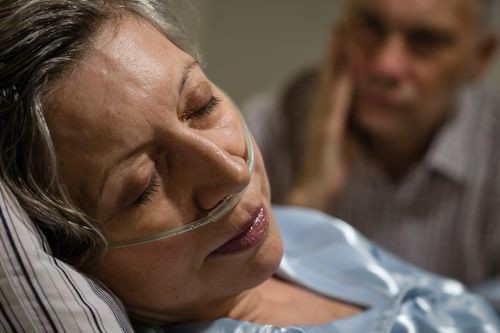Brain Zap 'Wakes' Patients In Near-Coma State With Mild Electrical Stimulation

Though patients in a total vegetative state showed no results, a group of Belgian scientists successfully aroused patients in near-comatose states to the point where they could react nonverbally with family and loved ones, a new study reports.
Patients had been in their unconscious states — able only to react with their eyes or reach for objects — for months, and sometimes years, as a result of traumatic brain injuries, oxygen deprivation, and a raft of other neurological disorders. By all accounts, the steps forward are small. Patients may never fully wake from their state, but researchers conducting the study said any potential for progress tended to suffice for family.
The team used a mild form of electrical stimulation to rouse the patients, administered for 20 minutes at a time. Aurore Thibaut, co-author of the study and postdoctoral researcher at the University of Liège, said the test’s simplicity and the brief glimpses of consciousness often compelled relatives to ask if they could buy a device. “They were really enthusiastic about that,” Thibaut told ABC News. “[The families] know they cannot recover, they cannot speak or work again. They say, ‘O.K., even if it’s a little thing I will try everything to improve to the state of my [loved one].'"
Thibaut and her colleagues tested the technique on 55 patients in total, 30 of whom were in near-vegetative states, known formally as a minimally conscious state (MCS). Some estimates peg the total number of adult and pediatric MCS cases somewhere between 112,000 and 280,000. Patients in this state can interact with their environments in severely limited, yet definite, ways. Since the difference between vegetative states and MCS is determined only through observed behavior, doctors may wrongly diagnose MCS patients as fully comatose if they can’t discern environmental awareness. Of the 55 subjects, 25 were in complete vegetative states.
Co-author Dr. Steven Laureys, neurologist and professor at the university, said the electrical stimulation was meant to jumpstart the otherwise dormant signals in the brain. The fact patients were able to respond after years of inactivity told researchers that the brain wasn’t set like concrete, but rather malleable. It’s “important there is some possibility of plasticity,” he said. Patients did not retain their limited boost of consciousness, however. Within a few hours, they returned to their unresponsive states.
But whether that sense of awareness lasts forever may be less important than the fact it happens at all. Some patients even responded so dramatically as to nod their head “yes” or “no” when Laureys asked them whether he was touching his nose. Sure, they weren’t getting up and walking around, Laureys told New Scientist, but “it shows there is potential for the brain to recover functionality, even several years after damage.”
These findings run counter to notions that patients with disorders of consciousness for more than a year merit labels of permanence. Future research will be able to tell experimenters how exactly the brain responds to stimulation, and what’s more, improve doctors’ ability to foresee a slide into brain death. According to the Centers for Disease Control and Prevention, some 5.3 million Americans currently live with a traumatic brain injury. For Laureys, who seeks to minimize errors in prognosis as much as possible, coming to a full understanding of the MCS has a number of implications.
"In some cases, members of your family can be left with difficult decisions about whether to remove life support,” he told New Scientist. “And we can't make any decisions ethically if we're not sure about the diagnosis, prognosis, and therapeutic options."
Source: Thibaut A, Bruno MA, Ledoux D, Demertzi A, Laureys S. tDCS in patients with disorders of consciousness. Neurology. 2014.



























